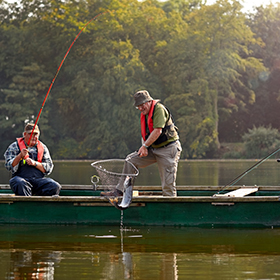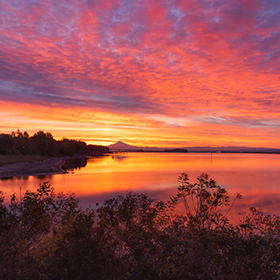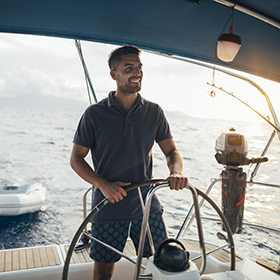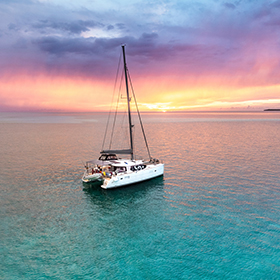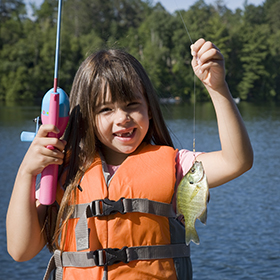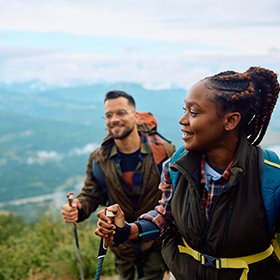List of wader safety guidelines for anglers. Wader safety tips, importance of wading belts, which wader materials, how to navigate safely wearing waders
Hours spent on fly fishing on beautiful mountain rivers and streams are treasured by many, but before you pack up your fly rod, be sure to consider some important wader safety guidelines. These guidelines will help you be better prepared, particularly if you're new to wearing waders and may not be accustomed to navigating through current.
- Don't forget to buckle up. One of the most important wader safety tips is to wear a wading belt. This should be mandatory when wearing waders because the belt will slow the flow of water into the legs of your waders and make your exit from any river a great deal easier. Even as uncomfortable as it may be in icy water, do your best to stay horizontal as you approach shore and drain the water out of the tops of your waders before standing up.
- Sport the right size and material. Use the manufacturer size charts, but always be sure to try waders on before you buy. You'll also want to consider water temperature and conditions when selecting the best pair of waders. Neoprene waders will give you the best insulation and durability when fishing cold water (preventing chilly legs or any numbness), whereas breathable waders are going to be your best bet when fishing warm waters during the summer months (preventing overheating).
- Take it slow. This is good guideline to follow for overall fishing safety, and isn't only applicable to wader safety. Take time to read the water when visiting any new river or fishing location. Research your fishing spot in advance, make sure you have a valid fishing license, and read the regulations for the waterway where you plan to fish. When you arrive, take it slow. Be mindful of making slow controlled movements in order to reduce your risk of a fall.
- Run through a practice drill. Put a pair of waders on and walk into a swimming pool or go out to a river during the warm summer months with an experienced friend. Fill your waders with water so that you can run through a practice drill. Run through the steps of floating on your back, paddling with your arms to keep your head up, pointing your feet downstream to steer yourself over any rocks, and locating a suitable exit spot. Going through practice drills will help prepare you in the event you ever have to deal with an emergency situation in colder waters.
- Use the buddy system. When wading through fast moving water, interlock arms. Two people are more secure when linked up, and you can catch each other in the event of any stumbles.
- Bring along a wading staff. While you may not think you need to use a staff, you'll be surprised by the added comfort and stability you have when wading through rapids if you use one. A wading staff can be particularly helpful when wading murky or stained waters because it will help you better gauge water depth.
- Shuffle versus step. Instead of lifting your feet to take a step, try shuffling across the bottom. When you lift your legs the current can push your legs out from under you, but by keeping your feet in contact with the bottom you reduce the chance of this happening.
Apply these six wader safety tips for a more relaxing and enjoyable fly fishing experience. Pull on your waders, grab your fly box, and head to a river near you… the trout are waiting.


